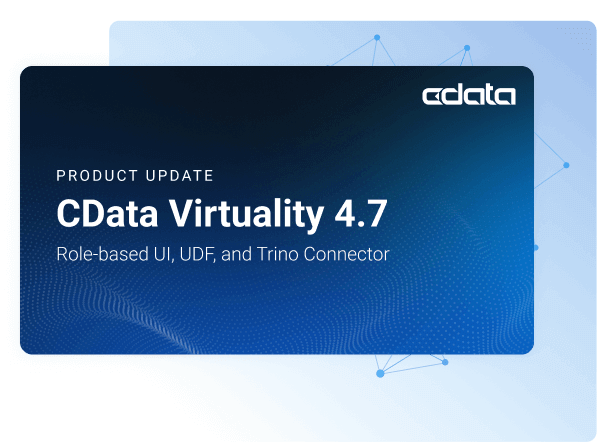Discover how a bimodal integration strategy can address the major data management challenges facing your organization today.
Get the Report →Replicate Multiple Google Search Accounts
Replicate multiple Google Search accounts to one or many databases.
CData Sync for Google Search is a stand-alone application that provides solutions for a variety of replication scenarios such as replicating sandbox and production instances into your database. Both Sync for Windows and Sync for Java include a command-line interface (CLI) that makes it easy to manage multiple Google Search connections. In this article we show how to use the CLI to replicate multiple Google Search accounts.
Configure Google Search Connections
You can save connection and email notification settings in an XML configuration file. To replicate multiple Google Search accounts, use multiple configuration files. Below is an example configuration to replicate Google Search to SQLite:
Windows
<?xml version="1.0" encoding="UTF-8" ?>
<CDataSync>
<DatabaseType>SQLite</DatabaseType>
<DatabaseProvider>System.Data.SQLite</DatabaseProvider>
<ConnectionString>CustomSearchId=def456;ApiKey=abc123;</ConnectionString>
<ReplicateAll>False</ReplicateAll>
<NotificationUserName></NotificationUserName>
<DatabaseConnectionString>Data Source=C:\my.db</DatabaseConnectionString>
<TaskSchedulerStartTime>09:51</TaskSchedulerStartTime>
<TaskSchedulerInterval>Never</TaskSchedulerInterval>
</CDataSync>
Java
<?xml version="1.0" encoding="UTF-8" ?>
<CDataSync>
<DatabaseType>SQLite</DatabaseType>
<DatabaseProvider>org.sqlite.JDBC</DatabaseProvider>
<ConnectionString>CustomSearchId=def456;ApiKey=abc123;</ConnectionString>
<ReplicateAll>False</ReplicateAll>
<NotificationUserName></NotificationUserName>
<DatabaseConnectionString>Data Source=C:\my.db</DatabaseConnectionString>
</CDataSync>
To search with a Google custom search engine, you need to set the CustomSearchId and ApiKey connection properties.
To obtain the CustomSearchId property, sign into Google Custom Search Engine and create a new search engine.
To obtain the ApiKey property, you must enable the Custom Search API in the Google API Console.
Configure Queries for Each Google Search Instance
Sync enables you to control replication with standard SQL. The REPLICATE statement is a high-level command that caches and maintains a table in your database. You can define any SELECT query supported by the Google Search API. The statement below caches and incrementally updates a table of Google Search results:
REPLICATE VideoSearch;
You can specify a file containing the replication queries you want to use to update a particular database. Separate replication statements with semicolons. The following options are useful if you are replicating multiple Google Search accounts into the same database:
You can use a different table prefix in the REPLICATE SELECT statement:
REPLICATE PROD_VideoSearch SELECT * FROM VideoSearch
Alternatively, you can use a different schema:
REPLICATE PROD.VideoSearch SELECT * FROM VideoSearch
Run Sync
After you have configured the connection strings and replication queries, you can run Sync with the following command-line options:
Windows
GoogleSearchSync.exe -g MyProductionGoogleSearchConfig.xml -f MyProductionGoogleSearchSync.sql
Java
java -Xbootclasspath/p:c:\sqlitejdbc.jar -jar GoogleSearchSync.jar -g MyProductionGoogleSearchConfig.xml -f MyProductionGoogleSearchSync.sql







